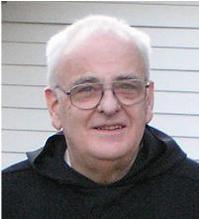 The Benedictine Abbots are going home now. They’ve
The Benedictine Abbots are going home now. They’ve
been meeting in Rome since the 17th. Their work was not deliberative
in any meaningful way as much as they gathered for the reason to elect an abbot primate, to gain perspective, to meet new and old monastic superiors, to hear how the worldwide Benedictines can assist one another in living the life more effectively and intensely according to the Holy Rule and the mind of the Church. Time was spent in prayer, study, and pilgrimage. How could one not spend time in prayer before the holy places of the martyrs in Rome as well as some of the central points of interest to Benedictines. Cindy Wooden from CNS published this
article today as a sort of synopsis of one aspect of Benedictine life–the
attraction of new members. Father Michael Casey, a Trappist monk, priest, author and speaker, addressed the assembly. He, by the way, is one of my favorite contemporary monastic thinkers. If only the abbots and other monastic superiors would listen to Father Michael. Alas, they’re too timid and many can’t (won’t?) do the hard work necessary to figure out what they ought to do so as to not live in diminishment mode. One often gets the feeling that some monasteries would rather die than alter their Benedictine observance and the adherence to Christ and the Church. But, I will say that despite a lack of clear and intense thinking, praying and living, there are significant points of like for Benedictine monasticism in the USA.
congress was Cistercian Father Michael Casey, an expert on monastic
spirituality from Tarrawarra Abbey in Australia.
responding to changing needs is an inescapable part of life, both for
individuals and for religious communities, he said. “The fact that we are
alive means that we are continually influenced by our past, continually
interacting with our present, and looking forward to the future. It’s really
just a matter of personal integrity, personal vitality that we do respect and
allow our past to continue speaking to us.”
